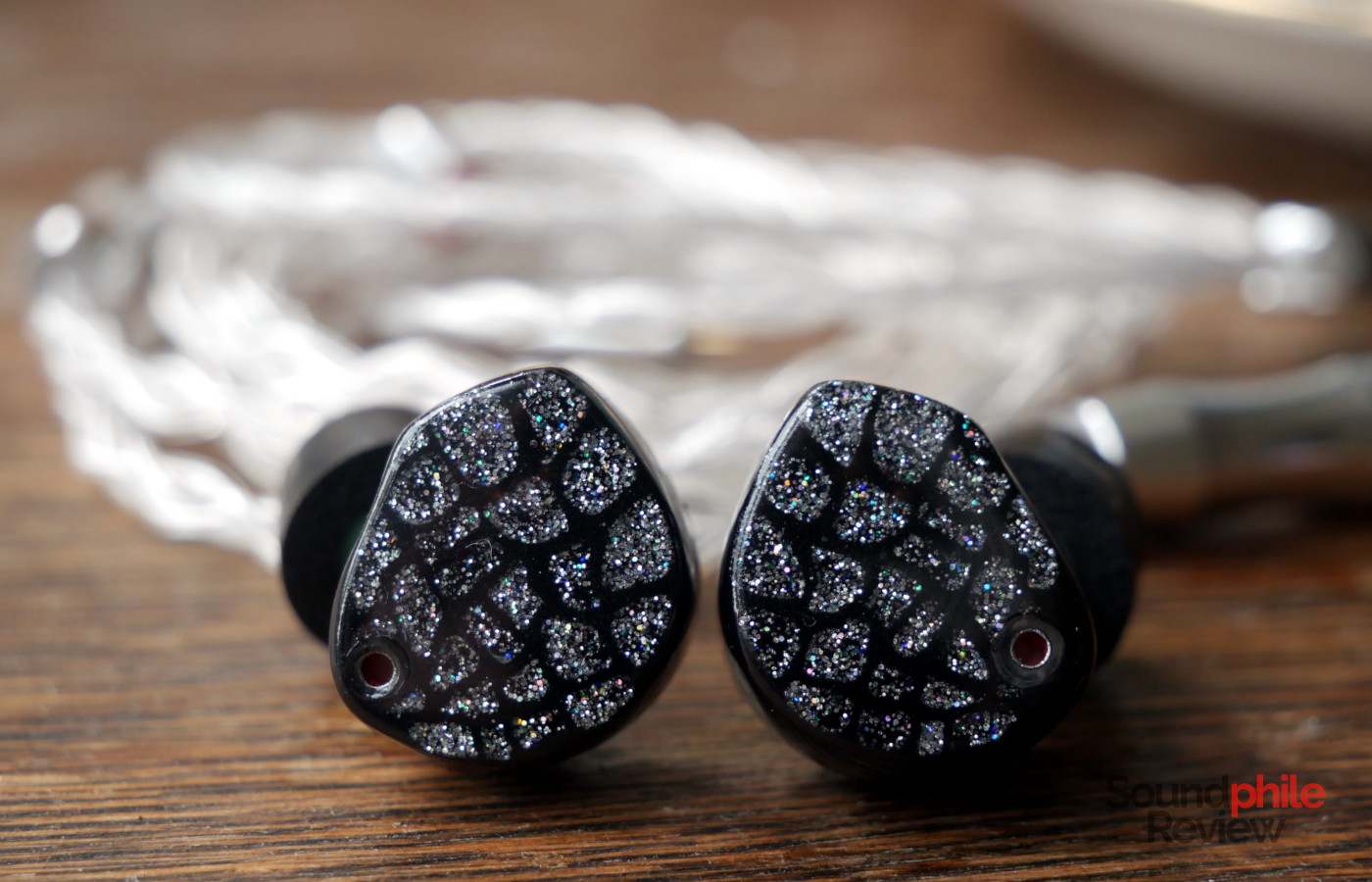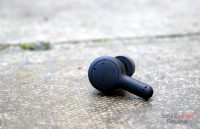I have long been a fan of Norse mythology, even going as far as doing my mini-thesis for high school on the subject. So when I was offered the chance to try out earphones called the Thor Mjölnir MKII, I seized the opportunity to see if they really are worthy of their mythical name.
Disclaimer: I received this pair free of charge from Linsoul – thanks to Kareena! The Thor Mjölnir MKII retails for $399.
TL;DR: recap
| Pros |
Cons |
| + Jewel-like design
+ Great comfort + Superb isolation + Good technicalities |
– Midrange can be a bit too bright
– Treble can become fatiguing |
Rating: 8/10
Packaging & Accessories
I received an anonymous-looking package with just two sets of eartips, one made of silicone and the other of foam. No other accessories were present.
Design & Comfort
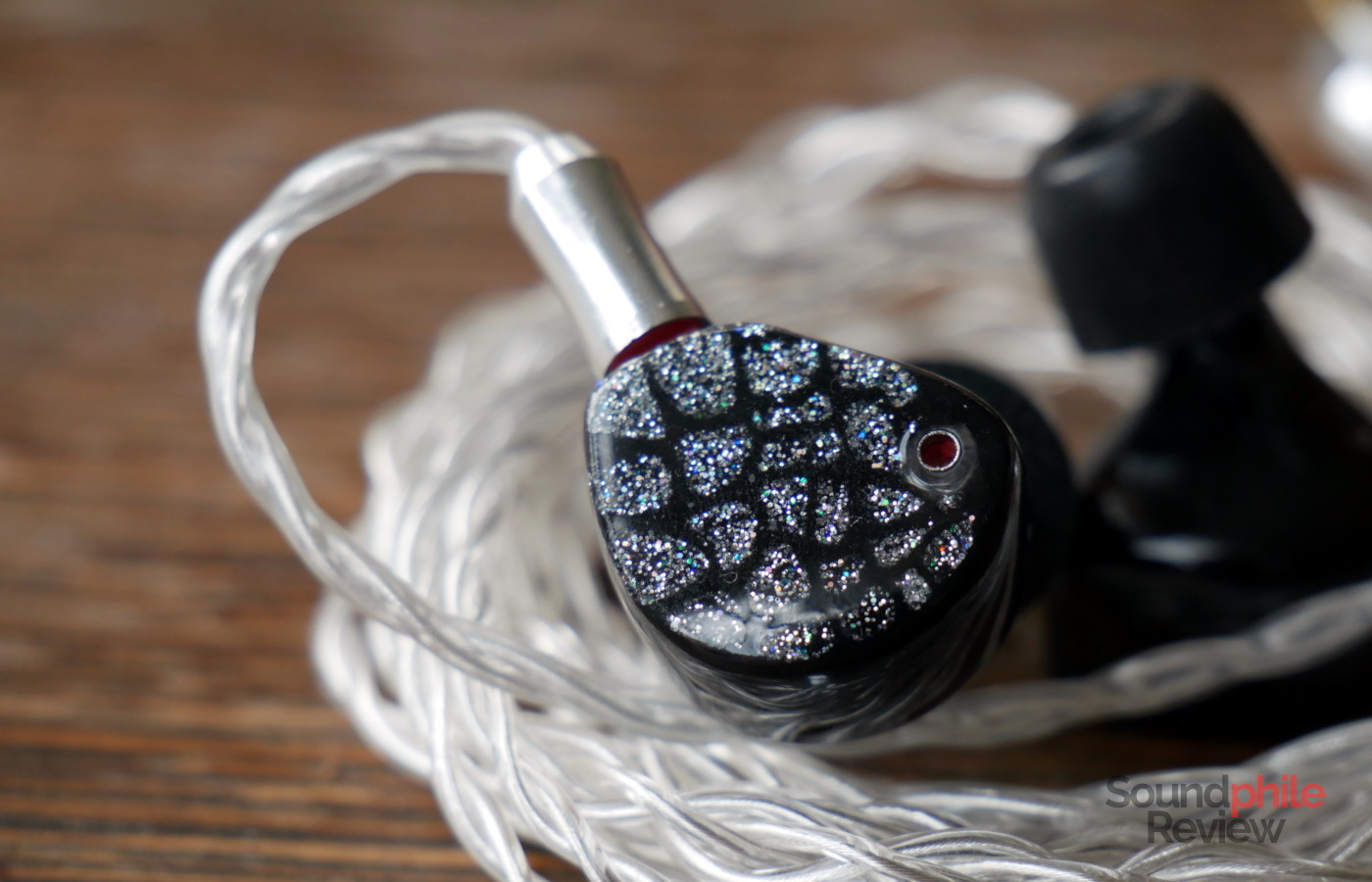
What struck me at first about the Thor Mjölnir MKII is that they have an… unusual design. They look more like jewels than earphones, which makes me think that a better-suited name would have been Brisingamen (for those who are not into Norse mythology, it’s the name of a necklace worn by Freyja, the goddess of beauty). Nerdy considerations aside, the Thor Mjölnir MKII look quite elaborate and their design, while not revolutionary by any means, is still very much pleasant.
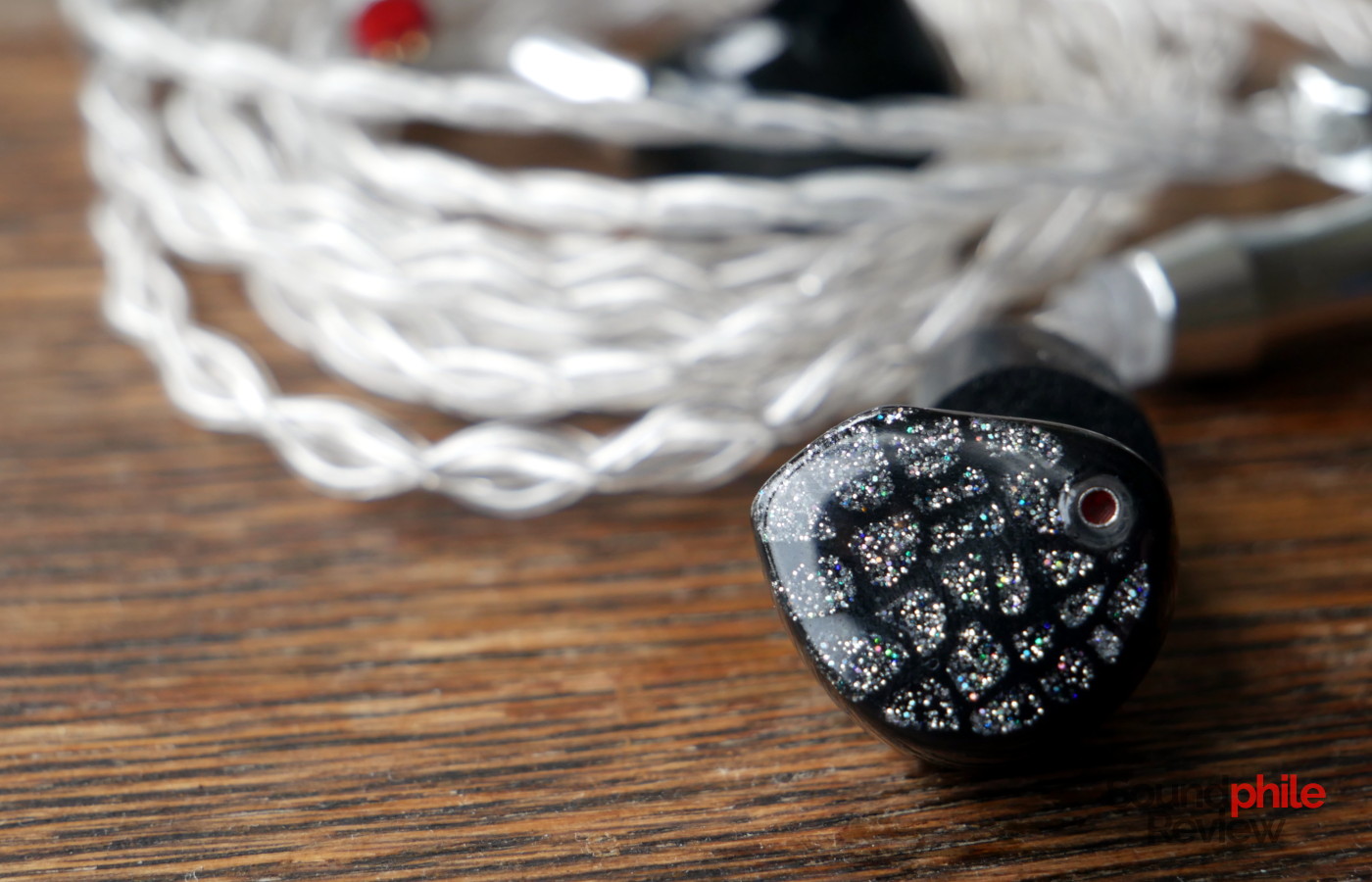
The shells, which are quite large, are made of resin, with the faceplate being fused to them. The nozzle is made of metal. Overall, I would say that build quality is quite good and perfectly in line with my expectations from a $400 piece of kit. The materials used appear to be good quality and the only criticism I can advance is that the shells are a bit prone to showing fingerprints and other dirt.
Despite the relatively large size of the shells, I find the Thor Mjölnir MKII quite comfortable to wear, even for long periods of time and even during workouts. The lack of any hard edges on the shells makes them quite comfortable.
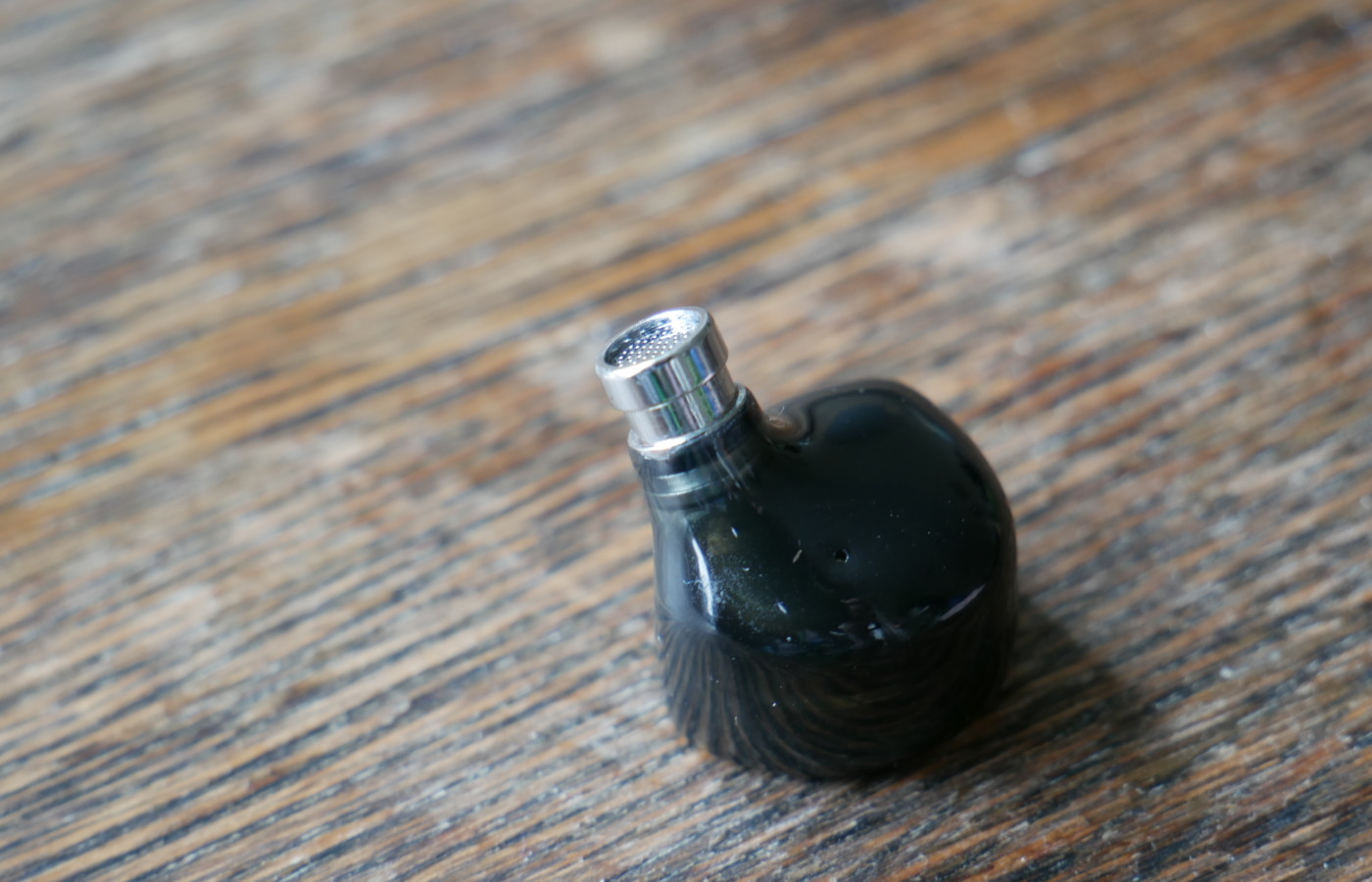
I have recently struggled to find in-ears with good isolation, but that offered by the Thor Mjölnir MKII is among the best I’ve found in general. It really reduces outside noise significantly, even when it’s quite loud, so you don’t have to raise the volume a lot in order to hear your music. They’ve become my go-to earphones when I go to the gym, as they are able to isolate me quite effectively from noises around me (people, treadmills, music…).
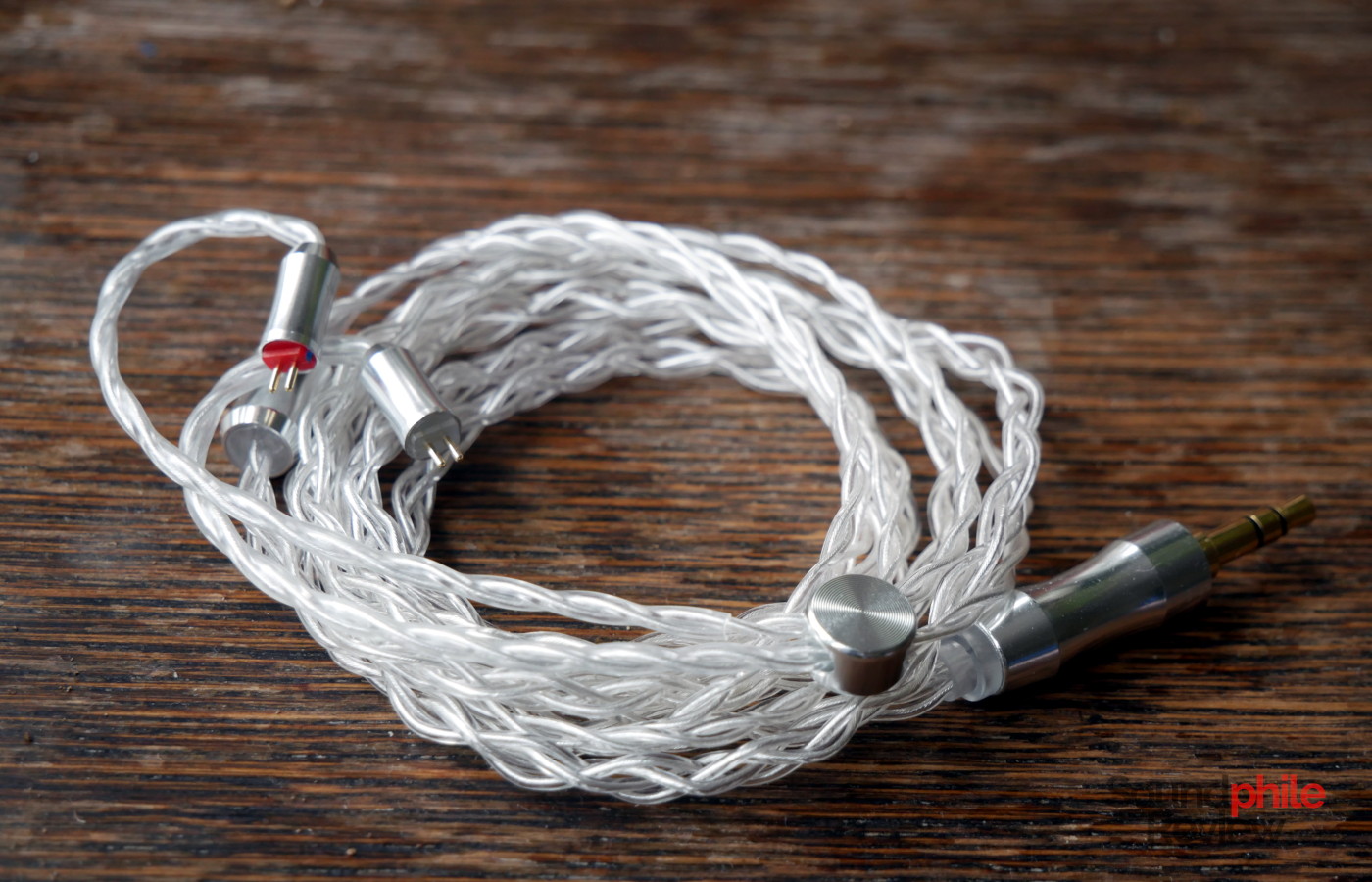
The cable uses four SPC cores, braided between the 3.5 mm jack and the Y-split and then simply twisted between that and the earphones. It’s a good quality cable that feels soft and malleable enough and suffers from very little microphonics. All the housings are made of solid metal. The only thing about the cable that warrants some criticism is the chin slider: the holes are too large, so it constantly falls down and is therefore not as useful as it might be.
Sound & Specs
I tested the Thor Mjölnir MKII using a Topping DX7 and a Drop THX AAA 789, as well as a HiBy R5.
Thor Mjölnir MKII |
| Frequency response | 8 – 40,000 Hz |
| Impedance | 16 Ω |
| Sensitivity | 115 dB |
I would describe the tuning of the Thor Mjölnir MKII as slightly V-shaped, with a good accent on the treble region.
Soundstage is limited in width, but it compensates this with good depth: you feel like you’re in an enclosed space, but it’s decently spacious in all directions. Imaging is very good as you can clearly point at the position of each instrument, with the full left-to-right spectrum being available. Instrument separation is also very good and it stays so even at very low volume, which is quite remarkable in and of itself.
Bass is quite likeable: it is fast and quite tight, with a sensation of immediacy in transients that make the sound as a whole quite snappy and dynamic (as in, with energy). In fact there’s also good physicality to be found here, which adds to these sensations. In terms of tuning, it is a bit more emphasised than in an ideally neutral setting, but it’s well done as this addition is mild and only adds some colour. In fact there’s no overlapping between bass and lower midrange, so the sound stays clear and clean. I overall quite like the Thor Mjölnir MKII’s bass as it is quite competent.
Midrange is U-shaped, with some emphasis on both ends of the area and especially on the upper one. Despite this, though, the middle region is not really distant, and this means that most instruments have the correct presence in the mix and are clearly audible, even in complex tracks. As with bass, there’s good things to be said about the technicalities: transients are fast and with short decay, and this lends the mids a good sense of speed.
The only area which might have some issues, especially for those already sensitive to it, is treble. There are in fact multiple peaks over the 8 kHz mark that do add lightness and air to the sound, but which can also become quite fatiguing. In tracks such as Carbon Based Lifeforms’ Tensor, from the 2019 remaster of the Hydroponic Gardens album, the cymbals are almost sharp. This is not uncommon and I’ve found many tracks with the same features. Treble is overall quite emphasised and is often very forward, so it is quite energetic. Quantity aside, it is of very good quality, with a lot of details that are clearly audible and a very good level of micro-details as well.
Final Thoughts
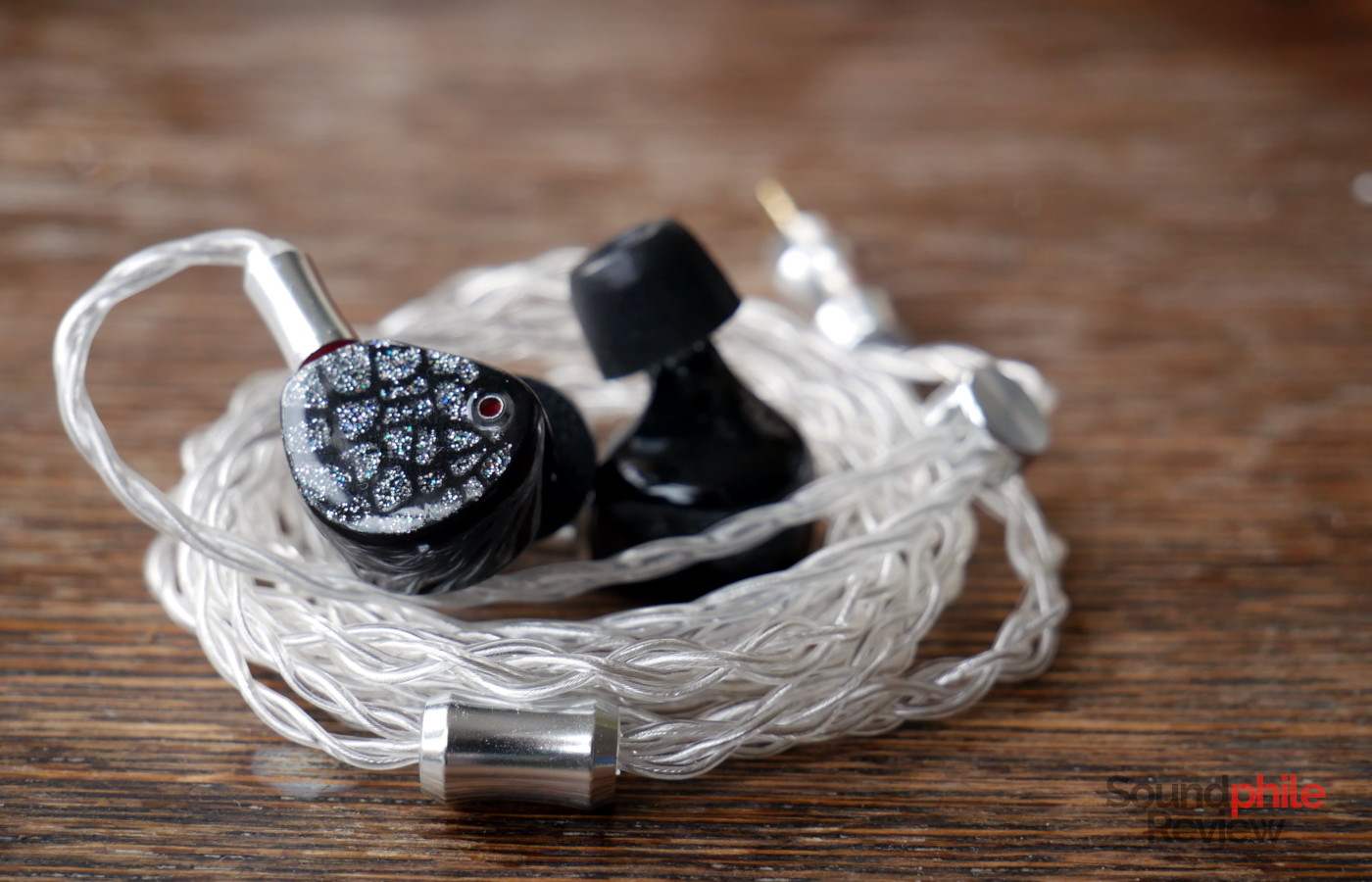
The Thor Mjölnir MKII may not exactly be as powerful as the mythical hammer held by the god from the Norse pantheon, but they’re certainly a very good piece of hardware. I do not agree with the tuning, as I find the treble to be too aggressive, but the quality is absolutely there: transients are fast, details are aplenty and technicalities are great, too. From a non-acoustic perspective, the Thor Mjölnir MKII offer great comfort and superb isolation, together with a very likeable design.
The Thor Mjölnir MKII are quite a good offering indeed, one that requires careful consideration and certainly more than a single listening session. I’m already quite excited to see where Thor will go with the next model.

